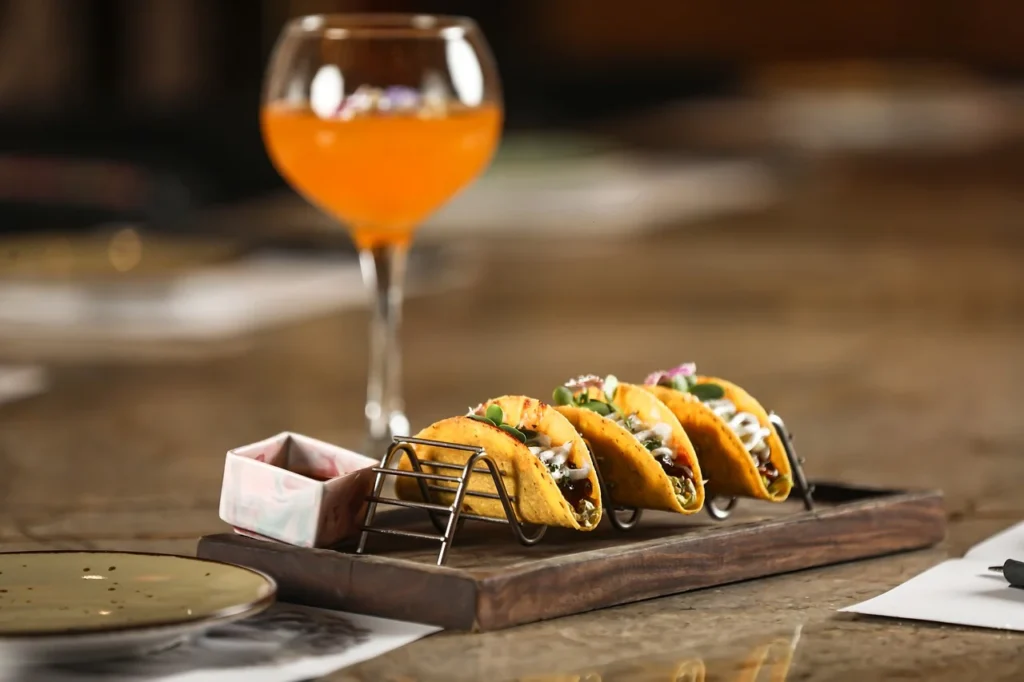In a world where every corner seems just a flight away, the travel and tourism industry faces an exciting yet challenging era. Travelers today are not just seeking destinations; they’re seeking experiences, stories, and a deeper engagement with the world. In this bustling marketplace, how can your travel brand stand out and create a lasting impression?
Branding in the travel and tourism sector is not just about flashy logos or catchy slogans; it’s about crafting a unique identity that resonates deeply with your target audience. It’s about creating an emotional connection that turns first-time visitors into lifelong advocates. In this comprehensive guide, we’ll dive into the strategies and secrets of successful branding in the travel and tourism industry, helping you to not only attract customers but to enchant them.
Understanding Your Brand Essence
First things first: what is your brand’s essence? This is the core of your identity, the heartbeat of your business. It’s what makes your brand unique and shapes how customers perceive and experience your services. Consider Airbnb – more than just a lodging option, it encapsulates the feeling of belonging anywhere. That’s branding at its emotional best.
Crafting Your Story
Every brand has a story. What’s yours? It could be the history of how your company came to be, the mission driving your business, or the personal experiences that shape your services. Authentic stories connect with people, create trust, and build brand loyalty. Ensure your story reflects your brand’s values and speaks directly to the heart of your audience.
Identifying Your Audience
Who are you speaking to? Young backpackers, luxury seekers, adventure enthusiasts, or cultural explorers? Understanding your target audience is crucial. It shapes your branding strategy, from your visual identity to your marketing channels. Tailor your message to resonate with your audience’s desires, needs, and travel aspirations.
Visual Identity and Design
Your visual identity – logos, color schemes, typography, and imagery – conveys your brand’s essence at a glance. Think of it as the visual storyteller of your brand. For instance, a logo featuring a mountain might immediately suggest adventure and exploration. Choose a design that reflects the feelings and experiences you want your brand to evoke.
Emotional Connection through Colors and Images
Colors and images are not just decorative elements; they evoke emotions and tell stories. Blue might convey tranquility or trustworthiness, essential for a cruise line or a safety-conscious travel insurer. High-quality, captivating images of destinations can ignite wanderlust, compelling potential travelers to explore further.
The Role of Content in Branding
Content is king in the digital world, and in travel branding, it’s your passport to visibility and connection. But what does impactful content look like in this industry?
Crafting Engaging Content
Your content should inspire, inform, and resonate with your audience’s sense of adventure and curiosity. From travel blogs and destination guides to customer testimonials and engaging social media posts, every piece of content should reinforce your brand identity and values. Keep it authentic, engaging, and always aligned with your audience’s interests.
SEO: Your Digital Compass
In the digital landscape, SEO is your compass, guiding potential customers to your brand amidst a sea of online content. Utilizing keywords effectively, optimizing for mobile users, and creating quality, shareable content are crucial SEO strategies. Remember, it’s not just about being found; it’s about being found by the right people.
Leveraging Social Media
Social media is a powerful tool in the travel industry. It’s where your customers share their stories, experiences, and reviews. Engage actively with your audience here. Share stunning visuals, run contests, and create shareable content that encourages user-generated content. Platforms like Instagram and Pinterest are particularly effective for visually-driven travel brands.
Customer Experience: The Heart of Travel Branding
Now, let’s talk about the cornerstone of travel branding – the customer experience. This isn’t just about the services you offer; it’s about how you make your customers feel, from the first click on your website to the memories they cherish post-trip.
Personalization and Attention to Detail
In the age of mass tourism, personalization can set your brand apart. Tailored experiences, attentive services, and thoughtful touches can transform a simple trip into an unforgettable journey. It shows your commitment to understanding and valuing your customer.
Building a Community
Travel is about connection — not just to places, but to people. Building a community around your brand can create a sense of belonging among your customers. Foster this through forums, social media groups, or loyalty programs. When customers feel part of a community, they’re more likely to become repeat clients and brand ambassadors.
Innovative Marketing Strategies for Travel Brands
In a rapidly evolving digital landscape, innovative marketing strategies can make a significant impact. Here’s how you can get creative with your travel branding efforts:
Experiential Marketing
In the travel industry, experiential marketing can be a game-changer. It’s about creating immersive experiences that bring your brand to life. Think virtual reality tours of destinations, pop-up events in cities, or interactive online webinars. These experiences enable customers to engage with your brand in a meaningful way, building excitement and anticipation for their own travels.
Collaborations and Partnerships
Collaborations with influencers, local businesses, or other travel services can broaden your reach and add value to your brand. For example, partnering with local artisans or restaurants can offer unique, authentic experiences to your customers, enhancing your brand’s credibility and appeal.
Storytelling through User-Generated Content
Encouraging your customers to share their travel stories, photos, and videos not only provides authentic content but also deepens community engagement. It’s a form of storytelling that’s genuine and trusted by prospective travelers. Feature these stories on your website, social media, or marketing campaigns to showcase real-life experiences associated with your brand.
Leveraging Technology for Enhanced Brand Experiences
Technology plays a crucial role in the modern travel and tourism industry, not only in operations but also in branding.
Virtual and Augmented Reality
Virtual and Augmented Reality (VR and AR) technologies offer immersive ways for customers to explore destinations before they even book. For instance, a VR tour of a hotel room or a historical site can create a captivating, interactive brand experience that traditional photos and videos can’t match.
Mobile App Integration
With the majority of travelers relying on smartphones, a user-friendly mobile app can significantly boost your brand’s accessibility and engagement. Features like personalized itineraries, in-app booking, and location-based recommendations can enhance the user experience and strengthen your brand presence in the digital space.
Sustainability: A Key Brand Differentiator
In an increasingly eco-conscious world, sustainability can set your brand apart. More travelers are looking for environmentally friendly and socially responsible travel options.
Eco-friendly Practices and Messaging
Incorporate sustainable practices in your operations and highlight them in your branding. Whether it’s eco-friendly accommodations, support for local communities, or wildlife conservation efforts, make sure these initiatives are visible and genuine.
Educating and Engaging Travelers
Use your platform to educate and engage travelers about sustainability in travel. This not only demonstrates your brand’s commitment to the environment but also resonates with the values of modern travelers, fostering a deeper connection with your audience.
Building a Brand Culture
A strong brand culture is essential for internal unity and external perception. It’s about creating a shared ethos that your team and your customers can believe in.
Training and Employee Engagement
Your employees are your brand ambassadors. Train them not just in service skills, but also in the vision and values of your brand. Engaged and motivated employees will naturally provide better experiences to travelers, enhancing your brand’s reputation.
Consistent Brand Messaging
Ensure that your brand message is consistent across all channels and touchpoints. Whether it’s your website, social media, customer service, or print materials, a coherent brand message builds trust and recognition.
Measuring Brand Success
Lastly, understanding how to measure your branding efforts is crucial for continuous improvement.
Analytics and Feedback
Use tools like Google Analytics, social media insights, and customer feedback surveys to gauge the effectiveness of your branding strategies. Look at metrics like website traffic, engagement rates, and conversion rates to get a clear picture of your brand’s performance.
Adjusting and Evolving
The travel industry is dynamic, and so should be your branding strategy. Be ready to adapt and evolve based on market trends, customer feedback, and technological advancements. A flexible, responsive brand is more likely to thrive in the changing travel landscape.

Related: Check out our free SEO suite

Harnessing the Power of Emotional Branding
Emotional branding goes beyond just selling a service; it’s about connecting with your customers on a deeper level. Here’s how to tap into this:
Creating a Sense of Belonging
Travelers often seek a sense of belonging and community. Brands like Airbnb have excelled by creating not just a service, but a feeling of being ‘at home’ anywhere in the world. Your branding could focus on creating a community around your services, where travelers feel they’re part of something special.
Telling Stories That Resonate
Storytelling is a powerful tool in emotional branding. Share stories that resonate with your audience’s desires and aspirations. These could be tales of adventure, relaxation, discovery, or cultural immersion. Stories that evoke emotions can be far more effective than just presenting facts or services.
Focusing on Niche Markets
Sometimes, targeting a specific niche can be more effective than trying to appeal to everyone. This can lead to more personalized and specialized services, which often resonates well with certain groups of travelers.
Catering to Special Interests
Whether it’s adventure travel, eco-tourism, luxury experiences, or cultural journeys, specializing in a niche market can set your brand apart. Tailor your branding to speak directly to these specific interests. For example, a brand focusing on eco-tourism should use imagery, messaging, and experiences that reflect a commitment to nature and sustainability.
Building Expertise and Authority
Brands that specialize in particular areas can build a reputation as experts or authorities in that niche. This not only enhances credibility but also attracts travelers who are specifically looking for those experiences.
Enhancing Digital Engagement
In an age where digital presence is crucial, engaging effectively online can make your brand more visible and accessible.
Interactive Websites and Platforms
Create a website or platform where potential travelers can not only get information but also interact, perhaps through quizzes, itinerary builders, or live chats. These interactive elements can keep users engaged longer and provide more value, enhancing brand perception.
Utilizing Video Content
Videos can be a powerful tool in travel branding, offering a dynamic way to showcase destinations and experiences. They can be used on various platforms, from your website to social media, and can range from short teasers to longer, immersive content.
Building Partnerships Beyond the Travel Sphere
Collaborations with brands and influencers outside the traditional travel sector can open up new avenues for branding.
Cross-Industry Collaborations
Partnering with brands in fashion, food and beverage, or entertainment can create unique cross-promotional opportunities. For instance, a travel brand might collaborate with a gourmet food brand to create a travel experience centered around culinary delights.
Leveraging Influencer Partnerships
Influencers from various fields can bring diverse audiences to your brand. Collaborations can go beyond traditional travel bloggers to include lifestyle, wellness, or sports influencers, each bringing their unique audience and style to your brand.
Prioritizing Accessibility and Inclusivity
A brand that champions accessibility and inclusivity can reach a wider, more diverse audience.
Making Travel Accessible to All
Ensure your travel experiences, website, and marketing materials are accessible to people with different abilities and from various backgrounds. This not only broadens your market but also positions your brand as socially responsible and caring.
Inclusive Marketing
Use imagery and language in your marketing that reflects a diverse range of travelers. Showing that everyone is welcome and catered for can strengthen your brand’s appeal across different demographics and markets.
Conclusion
Branding in the travel and tourism industry is a dynamic and multifaceted endeavor. It’s about crafting a unique identity and narrative that resonates with travelers, creating emotional connections, and building experiences that turn first-time visitors into lifelong fans. From the power of storytelling and the charm of niche markets to the impact of digital engagement and the importance of inclusivity, every aspect of your brand strategy plays a vital role in defining how travelers perceive and interact with your brand.
Remember, at the heart of effective branding in this industry is the ability to tell a compelling story, one that not only attracts but also immerses your audience in the unique world of travel experiences you offer. It’s about more than just selling a destination or a service; it’s about selling dreams, adventures, relaxation, and discovery. Your brand should embody the essence of these experiences and convey a promise of unforgettable memories.
READ NEXT:
- Why Authenticity is the Heart of Effective Content Marketing
- How to Magnetize Investment Buffs to Your Site with Proven SEO Tactics
- Navigating Regional SEO for Lifesciences: Our Take!
- Impact Of GDPR On Marketers in EU and Outside
- Branding for E-commerce Platforms: Standing Out in a Crowded Marketplace






















Comments are closed.